Far From Westeros, A Three-Eyed Raven Helps NASA Find Its Way
Far from Westeros, a Three-Eyed Raven Helps NASA Find Its Way
Perched on the outside of the International Space Station is Raven—a technology-filled module that helps NASA develop a relative navigation capability, which is essentially autopilot for spacecraft. Raven has been testing technologies to enable autonomous rendezvous in space, which means the ability to approach things in space without human involvement, even from the ground.

Developed by the Satellite Servicing Projects Division (SSPD), our three-eyed Raven has visible, infrared, and Lidar sensors and uses those “eyes” to image and track visiting spacecraft as they come and go from the space station. Although Raven is all-seeing, it only sees all in black and white. Color images do not offer an advantage in the case of Raven and Restore-L, which also utilize infrared and Lidar sensors.
The data from Raven’s sensors is sent to its processor, which autonomously sends commands that swivel Raven on its gimbal, or pointing system. When Raven turns using this system, it is able to track a vehicle. While these maneuvers take place, NASA operators evaluate the movements and make adjustments to perfect the relative navigation system technologies.

A few days ago, Raven completed its 21st observation of a spacecraft when it captured images of Northrop Grumman’s Cygnus vehicle delivering science investigations and supplies as part of its 11th commercial resupply services mission, including another SSPD payload called the Robotic External Leak Locator.

And just last month, Raven celebrated its two-year anniversary in space, marking the occasion with an observation of SpaceX’s Crew Dragon during the Demo-1 mission.

What is this—a spacecraft for ants??
While this shot of Dragon isn’t terribly impressive because of where the spacecraft docked on station, Raven has captured some truly great images when given the right viewing conditions.
From SpaceX Dragon resupply mission observations…

…to Cygnus supply vehicles.

Raven has observed six unique types of spacecraft.
It has also conducted a few observations not involving spacecraft, including the time it captured Hurricane Irma…

…or the time it captured station’s Dextre arm removing the Robotic Refueling Mission 3 payload, another mission developed by SSPD, from the Dragon spacecraft that delivered it to the orbiting laboratory.


Thus far, Raven has had a great, productive life aboard the station, but its work isn’t done yet! Whether it’s for Restore-L, which will robotically refuel a satellite, or getting humans to the Moon or Mars, the technologies Raven is demonstrating for a relative navigation system will support future NASA missions for decades to come.

Make sure to follow us on Tumblr for your regular dose of space: http://nasa.tumblr.com
More Posts from Ocrim1967 and Others










General Relativity Rules: Einstein Victorious In Unprecedented Gravitational Redshift Test
“The most interesting part of this result is that it clearly demonstrates the purely General Relativistic effect of gravitational redshift. The observations of S0-2 showcase an exact agreement with Einstein’s predictions, within the measurement uncertainties. When Einstein first conceived of General Relativity, he did so conceptually: with the idea that acceleration and gravitation were indistinguishable to an observer.
With the validation of Einstein’s predictions for the orbit of this star around the galactic center’s black hole, scientists have affirmed the equivalence principle, thereby ruling out or constraining alternative theories of gravity that violate this cornerstone of Einsteinian gravity. Gravitational redshifts have never been measured in environments where gravity is this strong, marking another first and another victory for Einstein. Even in the strongest environment ever probed, the predictions of General Relativity have yet to lead us astray.”
If you want to test Einstein’s General Relativity, you’ll want to look for an effect that it predicts that’s unique, and you’ll want to look for it in the strongest-field regime possible. Well, there’s a black hole at the center of our galaxy with 4 million times the mass of the Sun, and there’s a star (S0-2) that passes closer to it, during closest approach, than any other. In May of 2018, it made this closest approach, coming within 18 billion km (about twice the diameter of Neptune’s orbit) of the black hole, and zipping around at 2.7% the speed of light.
Did Einstein’s predictions for gravitational redshift come out right? You bet they did: 5-sigma, baby! Come get the full, amazing story here!

11/08/18
Jovian Close Encounter
A multitude of magnificent, swirling clouds in Jupiter’s dynamic North North Temperate Belt is captured in this image from NASA’s Juno spacecraft. Appearing in the scene are several bright-white “pop-up” clouds as well as an anticyclonic storm, known as a white oval. This color-enhanced image was taken at 1:58 p.m. PDT on Oct. 29, 2018 (4:58 p.m. EDT) as the spacecraft performed its 16th close flyby of Jupiter. At the time, Juno was about 4,400 miles (7,000 kilometers) from the planet’s cloud tops, at a latitude of approximately 40 degrees north. Citizen scientists Gerald Eichstädt and Seán Doran created this image using data from the spacecraft’s JunoCam imager. JunoCam’s raw images are available for the public to peruse and to process into image products at: http://missionjuno.swri.edu/junocam.

During its continued mission, NASA’s Juno spacecraft will maintain its 53-day polar orbit around Jupiter. At its closest, Juno passes within 3,000 miles (5,000 kilometers) of Jupiter’s cloud tops once during each 53-day orbit. At the high end of each orbit, Juno is about 5 million miles (8-million kilometers) from the planet – which is just beyond the orbit of the Jovian moon Themisto. Credits: NASA/JPL-Caltec
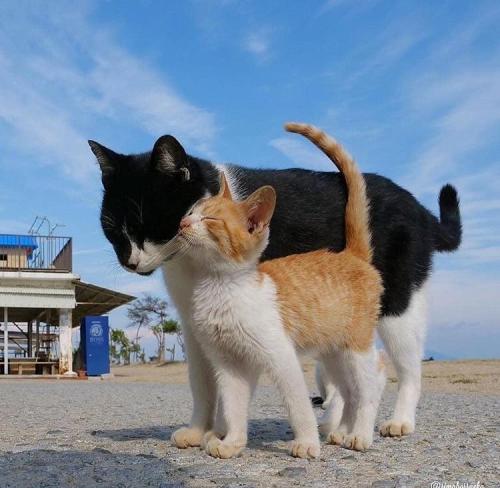
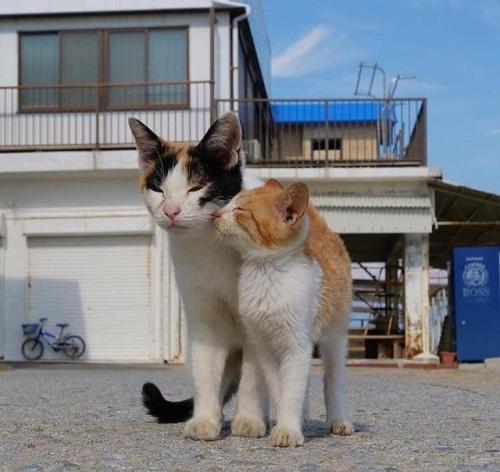
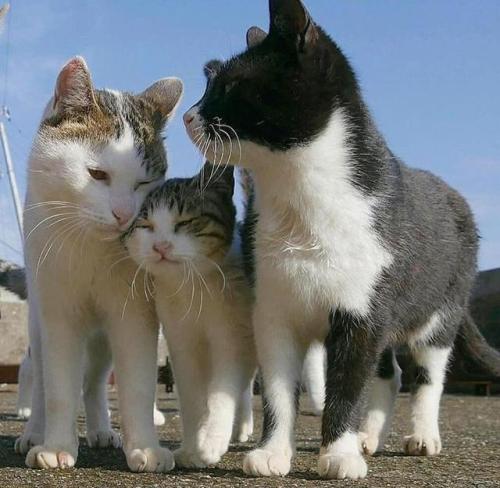


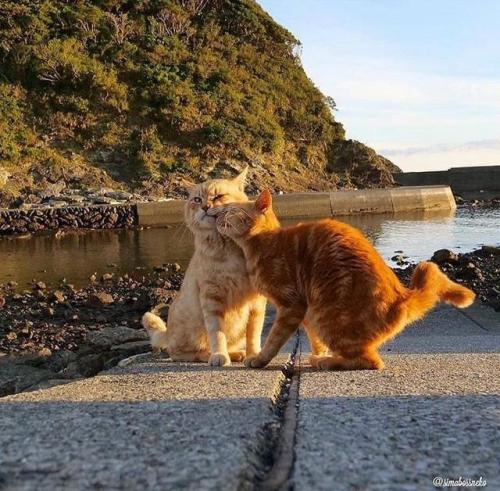




(Source)









(Source)










Ten Solstice Facts That Everyone Should Know
“9.) The solstices are neither the hottest nor coldest days of the year. This one is actually very specific to Earth: the hottest times of the year typically correspond to approximately 6 weeks after the summer solstice, and approximately 6 weeks after the winter solstice. Other planets don’t have this same phenomenon for one very important reason: they don’t have the majority of their surfaces covered in liquid water.
The oceans themselves, being composed of large quantities of water and containing approximately 1,000 times the mass of Earth’s atmospheres, contain a tremendous amount of heat, and are slow to change their temperatures. We might receive more (or less) energy from the Sun on the summer (or winter) solstices, but the oceans require time to heat up or cool down. Global average temperature extremes, therefore, usually occur in early August and February, rather than at the June and December solstices.”
The solstice, Latin for the Sun standing still in the sky, occurs whenever the Earth’s axial tilt reaches a maximum relative to the Earth’s orbital plane around the Sun. With a tilt of 23.5 degrees, but a tilt that’s independent of our elliptical orbit around the Sun, many surprising and counterintuitive facts arise.
Want to know as many of them as possible? Come get this remarkable and fascinating list of educational facts on this year’s solstice: June 21, 2019!
The Kepler space telescope has shown us our galaxy is teeming with planets — and other surprises

The Kepler space telescope has taught us there are so many planets out there, they outnumber even the stars. Here is a sample of these wondrous, weird and unexpected worlds (and other spectacular objects in space) that Kepler has spotted with its “eye” opened to the heavens.
Kepler has found that double sunsets really do exist.

Yes, Star Wars fans, the double sunset on Tatooine could really exist. Kepler discovered the first known planet around a double-star system, though Kepler-16b is probably a gas giant without a solid surface.
Kepler has gotten us closer to finding planets like Earth.

Nope. Kepler hasn’t found Earth 2.0, and that wasn’t the job it set out to do. But in its survey of hundreds of thousands of stars, Kepler found planets near in size to Earth orbiting at a distance where liquid water could pool on the surface. One of them, Kepler-62f, is about 40 percent bigger than Earth and is likely rocky. Is there life on any of them? We still have a lot more to learn.
This sizzling world is so hot iron would melt!

One of Kepler’s early discoveries was the small, scorched world of Kepler-10b. With a year that lasts less than an Earth day and density high enough to imply it’s probably made of iron and rock, this “lava world” gave us the first solid evidence of a rocky planet outside our solar system.
If it’s not an alien megastructure, what is this oddly fluctuating star?

When Kepler detected the oddly fluctuating light from “Tabby’s Star,” the internet lit up with speculation of an alien megastructure. Astronomers have concluded it’s probably an orbiting dust cloud.
Kepler caught this dead star cannibalizing its planet.

What happens when a solar system dies? Kepler discovered a white dwarf, the compact corpse of a star in the process of vaporizing a planet.
These Kepler planets are more than twice the age of our Sun!

The five small planets in Kepler-444 were born 11 billion years ago when our galaxy was in its youth. Imagine what these ancient planets look like after all that time?
Kepler found a supernova exploding at breakneck speed.

This premier planet hunter has also been watching stars explode. Kepler recorded a sped-up version of a supernova called a “fast-evolving luminescent transit” that reached its peak brightness at breakneck speed. It was caused by a star spewing out a dense shell of gas that lit up when hit with the shockwave from the blast.
* All images are artist illustrations.
Make sure to follow us on Tumblr for your regular dose of space: http://nasa.tumblr.com
5 New Competitions for the Artemis Generation!
A common question we get is, “How can I work with NASA?”
The good news is—just in time for the back-to-school season—we have a slew of newly announced opportunities for citizen scientists and researchers in the academic community to take a shot at winning our prize competitions.
As we plan to land humans on the Moon by 2024 with our upcoming Artemis missions, we are urging students and universities to get involved and offer solutions to the challenges facing our path to the Moon and Mars. Here are five NASA competitions and contests waiting for your ideas on everything from innovative ways to drill for water on other planets to naming our next rover:
1. The BIG Idea Challenge: Studying Dark Regions on the Moon
Before astronauts step on the Moon again, we will study its surface to prepare for landing, living and exploring there. Although it is Earth’s closest neighbor, there is still much to learn about the Moon, particularly in the permanently shadowed regions in and near the polar regions.

Through the annual Breakthrough, Innovative and Game-changing (BIG) Idea Challenge, we’re asking undergraduate and graduate student teams to submit proposals for sample lunar payloads that can demonstrate technology systems needed to explore areas of the Moon that never see the light of day. Teams of up to 20 students and their faculty advisors are invited to propose unique solutions in response to one of the following areas:
• Exploration of permanently shadowed regions in lunar polar regions • Technologies to support in-situ resource utilization in these regions • Capabilities to explore and operate in permanently shadowed regions
Interested teams are encouraged to submit a Notice of Intent by September 27 in order to ensure an adequate number of reviewers and to be invited to participate in a Q&A session with the judges prior to the proposal deadline. Proposal and video submission are due by January 16, 2020.
2. RASC-AL 2020: New Concepts for the Moon and Mars
Although boots on the lunar surface by 2024 is step one in expanding our presence beyond low-Earth orbit, we’re also readying our science, technology and human exploration missions for a future on Mars.
The 2020 Revolutionary Aerospace Systems Concepts – Academic Linkage (RASC-AL) Competition is calling on undergraduate and graduate teams to develop new concepts that leverage innovations for both our Artemis program and future human missions to the Red Planet. This year’s competition branches beyond science and engineering with a theme dedicated to economic analysis of commercial opportunities in deep space.

Competition themes range from expanding on how we use current and future assets in cislunar space to designing systems and architectures for exploring the Moon and Mars. We’re seeking proposals that demonstrate originality and creativity in the areas of engineering and analysis and must address one of the five following themes: a south pole multi-purpose rover, the International Space Station as a Mars mission analog, short surface stay Mars mission, commercial cislunar space development and autonomous utilization and maintenance on the Gateway or Mars-class transportation.
The RASC-AL challenge is open to undergraduate and graduate students majoring in science, technology, engineering, or mathematics at an accredited U.S.-based university. Submissions are due by March 5, 2020 and must include a two-minute video and a detailed seven to nine-page proposal that presents novel and robust applications that address one of the themes and support expanding humanity’s ability to thrive beyond Earth.
3. The Space Robotics Challenge for Autonomous Rovers
Autonomous robots will help future astronauts during long-duration missions to other worlds by performing tedious, repetitive and even strenuous tasks. These robotic helpers will let crews focus on the more meticulous areas of exploring. To help achieve this, our Centennial Challenges initiative, along with Space Center Houston of Texas, opened the second phase of the Space Robotics Challenge. This virtual challenge aims to advance autonomous robotic operations for missions on the surface of distant planets or moons.

This new phase invites competitors 18 and older from the public, industry and academia to develop code for a team of virtual robots that will support a simulated in-situ resource utilization mission—meaning gathering and using materials found locally—on the Moon.
The deadline to submit registration forms is December 20.
4. Moon to Mars Ice & Prospecting Challenge to Design Hardware, Practice Drilling for Water on the Moon and Mars
A key ingredient for our human explorers staying anywhere other than Earth is water. One of the most crucial near-term plans for deep space exploration includes finding and using water to support a sustained presence on our nearest neighbor and on Mars.
To access and extract that water, NASA needs new technologies to mine through various layers of lunar and Martian dirt and into ice deposits we believe are buried beneath the surface. A special edition of the RASC-AL competition, the Moon to Mars Ice and Prospecting Challenge, seeks to advance critical capabilities needed on the surface of the Moon and Mars. The competition, now in its fourth iteration, asks eligible undergraduate and graduate student teams to design and build hardware that can identify, map and drill through a variety of subsurface layers, then extract water from an ice block in a simulated off-world test bed.
Interested teams are asked to submit a project plan detailing their proposed concept’s design and operations by November 14. Up to 10 teams will be selected and receive a development stipend. Over the course of six months teams will build and test their systems in preparation for a head-to-head competition at our Langley Research Center in June 2020.
5. Name the Mars 2020 Rover!
Red rover, red rover, send a name for Mars 2020 right over! We’re recruiting help from K-12 students nationwide to find a name for our next Mars rover mission.
The Mars 2020 rover is a 2,300-pound robotic scientist that will search for signs of past microbial life, characterize the planet’s climate and geology, collect samples for future return to Earth, and pave the way for human exploration of the Red Planet.
K-12 students in U.S. public, private and home schools can enter the Mars 2020 Name the Rover essay contest. One grand prize winner will name the rover and be invited to see the spacecraft launch in July 2020 from Cape Canaveral Air Force Station in Florida. To enter the contest, students must submit by November 1 their proposed rover name and a short essay, no more than 150 words, explaining why their proposed name should be chosen.
Just as the Apollo program inspired innovation in the 1960s and ‘70s, our push to the Moon and Mars is inspiring students—the Artemis generation—to solve the challenges for the next era of space exploration.
For more information on all of our open prizes and challenges, visit: https://www.nasa.gov/solve/explore_opportunities
Make sure to follow us on Tumblr for your regular dose of space: http://nasa.tumblr.com
Extreme Science: Launching Sounding Rockets from The Arctic
This winter, our scientists and engineers traveled to the world’s northernmost civilian town to launch rockets equipped with cutting-edge scientific instruments.

This is the beginning of a 14-month-long campaign to study a particular region of Earth’s magnetic field — which means launching near the poles. What’s it like to launch a science rocket in these extreme conditions?

Our planet is protected by a natural magnetic field that deflects most of the particles that flow out from the Sun — the solar wind — away from our atmosphere. But near the north and south poles, two oddities in Earth’s magnetic field funnel these solar particles directly into our atmosphere. These regions are the polar cusps, and it turns out they’re the ideal spot for studying how our atmosphere interacts with space.

The scientists of the Grand Challenge Initiative — Cusp are using sounding rockets to do their research. Sounding rockets are suborbital rockets that launch to a few hundred miles in altitude, spending a few minutes in space before falling back to Earth. That means sounding rockets can carry sensitive instruments above our atmosphere to study the Sun, other stars and even distant galaxies.
They also fly directly through some of the most interesting regions of Earth’s atmosphere, and that’s what scientists are taking advantage of for their Grand Challenge experiments.

One of the ideal rocket ranges for cusp science is in Ny-Ålesund, Svalbard, off the coast of Norway and within the Arctic circle. Because of its far northward position, each morning Svalbard passes directly under Earth’s magnetic cusp.
But launching in this extreme, remote environment puts another set of challenges on the mission teams. These launches need to happen during the winter, when Svalbard experiences 24/7 darkness because of Earth’s axial tilt. The launch teams can go months without seeing the Sun.

Like for all rocket launches, the science teams have to wait for the right weather conditions to launch. Because they’re studying upper atmospheric processes, some of these teams also have to wait for other science conditions, like active auroras. Auroras are created when charged particles collide with Earth’s atmosphere — often triggered by solar storms or changes in the solar wind — and they’re related to many of the upper-atmospheric processes that scientists want to study near the magnetic cusp.

But even before launch, the extreme conditions make launching rockets a tricky business — it’s so cold that the rockets must be encased in styrofoam before launch to protect them from the low temperatures and potential precipitation.

When all is finally ready, an alarm sounds throughout the town of Ny-Ålesund to alert residents to the impending launch. And then it’s up, up and away! This photo shows the launch of the twin VISIONS-2 sounding rockets on Dec. 7, 2018 from Ny-Ålesund.

These rockets are designed to break up during flight — so after launch comes clean-up. The launch teams track where debris lands so that they can retrieve the pieces later.

The next launch of the Grand Challenge Initiative is AZURE, launching from Andøya Space Center in Norway in April 2019.
For even more about what it’s like to launch science rockets in extreme conditions, check out one scientist’s notes from the field: https://go.nasa.gov/2QzyjR4

For updates on the Grand Challenge Initiative and other sounding rocket flights, visit nasa.gov/soundingrockets or follow along with NASA Wallops and NASA heliophysics on Twitter and Facebook.
@NASA_Wallops | NASA’s Wallops Flight Facility | @NASASun | NASA Sun Science

The Top 8 Social Media Trends to Watch Out For #Infographic
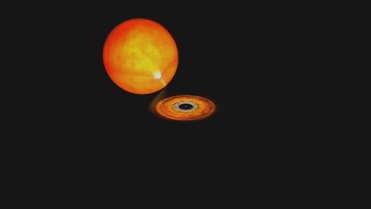

Millisecond Pulsar with Magnetic Field Structure
A pulsar is a rapidly rotating neutron star that emits pulses of radiation (such as X-rays and radio waves) at regular intervals. A millisecond pulsar is one with a rotational period between 1 and 10 milliseconds, or from 60,000 to 6,000 revolutions per minute. Pulsars form in supernova explosions, but even newborn pulsars don’t spin at millisecond speeds, and they gradually slow down with age. If, however, a pulsar is a member of a binary system with a normal star, gas transferred from the companion can spin up an old, slow pulsar to the millisecond range.
Credit: NASA, Dana Berry: Lead Animator Michael McClare (HTSI)
-
 aeltri liked this · 3 years ago
aeltri liked this · 3 years ago -
 thevoidisloudandwantsorangejuice liked this · 3 years ago
thevoidisloudandwantsorangejuice liked this · 3 years ago -
 haliphron liked this · 4 years ago
haliphron liked this · 4 years ago -
 azurecrucis liked this · 5 years ago
azurecrucis liked this · 5 years ago -
 bitter1stuff reblogged this · 5 years ago
bitter1stuff reblogged this · 5 years ago -
 thnks-fr-th-samulet liked this · 5 years ago
thnks-fr-th-samulet liked this · 5 years ago -
 computerlandstuff-blog liked this · 5 years ago
computerlandstuff-blog liked this · 5 years ago -
 cliffsteele reblogged this · 6 years ago
cliffsteele reblogged this · 6 years ago -
 cliffsteele liked this · 6 years ago
cliffsteele liked this · 6 years ago -
 z-bot liked this · 6 years ago
z-bot liked this · 6 years ago -
 shmoo92 reblogged this · 6 years ago
shmoo92 reblogged this · 6 years ago -
 brinelakes liked this · 6 years ago
brinelakes liked this · 6 years ago -
 contemporaryuser reblogged this · 6 years ago
contemporaryuser reblogged this · 6 years ago -
 snooty-mcsnoot reblogged this · 6 years ago
snooty-mcsnoot reblogged this · 6 years ago -
 ghost809 liked this · 6 years ago
ghost809 liked this · 6 years ago -
 hp-chats liked this · 6 years ago
hp-chats liked this · 6 years ago -
 valiisi liked this · 6 years ago
valiisi liked this · 6 years ago -
 myskinlikesnow-blog-blog reblogged this · 6 years ago
myskinlikesnow-blog-blog reblogged this · 6 years ago -
 myskinlikesnow-blog-blog liked this · 6 years ago
myskinlikesnow-blog-blog liked this · 6 years ago -
 magnetic-terp-input reblogged this · 6 years ago
magnetic-terp-input reblogged this · 6 years ago -
 onehalfspace reblogged this · 6 years ago
onehalfspace reblogged this · 6 years ago -
 mspartanguml liked this · 6 years ago
mspartanguml liked this · 6 years ago -
 den1990 reblogged this · 6 years ago
den1990 reblogged this · 6 years ago -
 mnjr23rd liked this · 6 years ago
mnjr23rd liked this · 6 years ago -
 georgieharrisons reblogged this · 6 years ago
georgieharrisons reblogged this · 6 years ago -
 murakohyuga reblogged this · 6 years ago
murakohyuga reblogged this · 6 years ago -
 pinkiepieaddict reblogged this · 6 years ago
pinkiepieaddict reblogged this · 6 years ago -
 col-brightside reblogged this · 6 years ago
col-brightside reblogged this · 6 years ago -
 the-summer-sun-au liked this · 6 years ago
the-summer-sun-au liked this · 6 years ago -
 firolamitia liked this · 6 years ago
firolamitia liked this · 6 years ago -
 stephnature reblogged this · 6 years ago
stephnature reblogged this · 6 years ago -
 stephanie085 liked this · 6 years ago
stephanie085 liked this · 6 years ago -
 neuromancer-is-real reblogged this · 6 years ago
neuromancer-is-real reblogged this · 6 years ago -
 caccobaleno liked this · 6 years ago
caccobaleno liked this · 6 years ago -
 lucifer-rockefeller-blog liked this · 6 years ago
lucifer-rockefeller-blog liked this · 6 years ago